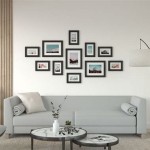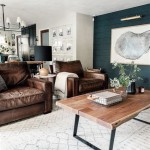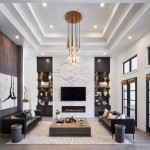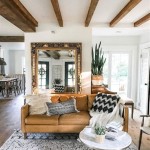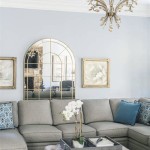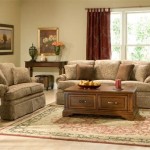Selecting the Right Living Room Table and End Tables
The living room is often considered the heart of the home, a space for relaxation, entertainment, and social gatherings. The furniture within this space significantly contributes to its overall ambiance and functionality. Among the most crucial pieces are the living room table and end tables, which serve not only as decorative accents but also as practical surfaces for everyday use. This article will explore the key aspects to consider when selecting these essential pieces, ensuring they complement your existing décor, meet your functional needs, and stand the test of time.
Understanding Your Space and Needs
Before embarking on the selection process, it is imperative to thoroughly assess the living room's dimensions and how the space is intended to be used. A large living room can comfortably accommodate a substantial coffee table and multiple end tables, whereas a smaller space may necessitate more compact and strategically placed pieces. Consider the flow of traffic within the room; furniture should facilitate movement, not impede it.
The intended use of the living room table and end tables will also influence the selection. Is the table primarily for display purposes, holding decorative items and acting as a focal point? Or will it be used frequently for eating, working, or playing games? End tables, similarly, might serve as a resting place for lamps, books, and beverages, or they might be used to house storage compartments for remote controls, magazines, and other household items.
Furthermore, consider the existing furniture in the living room. The style, color, and material of the sofa, armchairs, and entertainment center should be taken into account to ensure a cohesive and harmonious aesthetic. The living room table and end tables should complement, not clash with, the existing furnishings.
Material Considerations and Durability
The material composition of living room tables and end tables significantly impacts their aesthetics, durability, and maintenance requirements. A wide array of materials is available, each with its own unique advantages and disadvantages.
Wood remains a popular choice due to its natural warmth, versatility, and durability. Hardwoods such as oak, maple, and walnut are particularly robust and resistant to scratches and dents. Softer woods like pine may offer a more cost-effective option, but they require more careful handling to prevent damage. Wood tables can be stained, painted, or left with a natural finish, allowing for customization to suit various design styles.
Glass tables offer a sleek and modern aesthetic. Tempered glass is a durable and safe option, as it is less likely to shatter into sharp pieces if broken. Glass tables can make a small room feel larger by allowing light to pass through, but they may require frequent cleaning to remove fingerprints and smudges.
Metal tables, often made from steel, iron, or aluminum, offer a contemporary and industrial look. Metal is highly durable and can withstand heavy use. It is also relatively easy to clean and maintain. However, metal tables may not be as visually warm or inviting as wood or glass options.
Stone tables, constructed from materials like marble, granite, or slate, offer a luxurious and elegant aesthetic. Stone is incredibly durable and resistant to heat and scratches. However, stone tables can be quite heavy and expensive, and they may require specialized cleaning products.
When selecting a material, it is essential to consider the overall aesthetic of the living room and the level of maintenance you are willing to undertake. Choose a material that complements your existing décor and that can withstand the wear and tear of daily use.
Style and Design Aesthetics
The style and design of the living room table and end tables should align with the overall aesthetic of the living room. A wide range of styles is available, from traditional to contemporary, and selecting the right style can significantly enhance the room's visual appeal.
Traditional styles often feature intricate detailing, ornate carvings, and classic shapes. These tables are typically made from wood and may be finished with rich stains or antique glazes. Traditional tables create a sense of elegance and sophistication.
Contemporary styles emphasize clean lines, minimalist designs, and geometric shapes. These tables may be made from a variety of materials, including glass, metal, and wood. Contemporary tables create a sense of modernity and simplicity.
Rustic styles feature natural materials, such as reclaimed wood and distressed metal. These tables often have a weathered or aged appearance, adding character and charm to the living room. Rustic tables create a sense of warmth and informality.
Mid-century modern styles are characterized by their clean lines, tapered legs, and organic shapes. These tables often feature a combination of wood and metal, and they may be finished with warm, earthy tones. Mid-century modern tables create a sense of retro sophistication.
Eclectic styles combine elements from different design periods and styles, creating a unique and personalized look. Eclectic tables may feature a mix of materials, colors, and textures. This approach requires careful consideration to ensure that the various elements complement each other, rather than clashing.
When choosing a style, consider the existing furniture and décor in the living room. Select tables that complement the overall aesthetic and that reflect your personal taste. It is also important to consider the size and shape of the tables in relation to the other furniture in the room.
Shape and Size Considerations
The shape and size of the living room table and end tables should be carefully considered to ensure they fit proportionally within the space and meet your functional needs. The shape can influence the flow of traffic and the overall feel of the room, while the size determines the table's utility and storage capacity.
Rectangular coffee tables are a common choice, particularly for larger living rooms. They provide ample surface area for drinks, snacks, and decorative items. However, they can sometimes feel bulky in smaller spaces.
Square coffee tables offer a more compact option, suitable for smaller living rooms or seating areas. They provide a balanced and symmetrical look, working well with sectional sofas or L-shaped seating arrangements.
Round coffee tables promote a sense of intimacy and encourage conversation. They are also a good choice for homes with young children, as they eliminate sharp corners. However, round tables may offer less surface area than rectangular or square options.
Oval coffee tables combine the benefits of rectangular and round shapes, providing ample surface area while also softening the room's geometry. They work well in both large and small living rooms.
End tables, typically placed beside sofas or armchairs, range in size and shape. Square end tables offer a classic and versatile option, providing a balanced surface for lamps, books, and beverages. Round end tables soften the room's edges and create a more relaxed atmosphere. Rectangular end tables can fit snugly against a wall or sofa, maximizing space efficiency. Consider the height of the end table in relation to the arm of the adjacent seating. Ideally, the tabletop should be at or slightly below arm height for optimal comfort and accessibility.
Nested tables offer a flexible solution for smaller living rooms. These tables consist of two or three tables of varying sizes that can be stacked together when not in use. They provide additional surface area when needed and can be easily tucked away when not required.
Storage Solutions and Functionality
Living room tables and end tables can also serve as valuable storage solutions, helping to keep the space organized and clutter-free. Consider tables with built-in drawers, shelves, or cabinets to maximize functionality.
Coffee tables with drawers provide discreet storage for remote controls, magazines, and other small items. These drawers can help to keep the tabletop clear and uncluttered.
Coffee tables with shelves offer open storage for books, baskets, or decorative items. Shelves can add visual interest to the table and provide easy access to frequently used items.
Coffee tables with lift-top mechanisms can transform into a temporary workspace or dining surface. These tables are particularly useful for small apartments or homes where space is limited.
End tables with cabinets provide concealed storage for larger items, such as blankets, pillows, or games. Cabinets can help to keep the living room tidy and organized.
End tables with magazine racks offer a convenient way to store and display magazines and newspapers. These racks can prevent clutter and keep reading materials within easy reach.
When selecting tables with storage, consider the type of items you need to store and the amount of storage space required. Choose tables that offer ample storage without compromising on style or functionality.
Color and Finish Options
The color and finish of the living room table and end tables can significantly impact the overall aesthetic of the room. Consider the existing color palette and choose tables that complement or contrast with the other furnishings.
Neutral colors, such as white, beige, gray, and black, are versatile and can easily blend with a variety of décor styles. These colors create a sense of calm and sophistication, and they can make a small room feel larger.
Warm colors, such as brown, red, orange, and yellow, create a sense of warmth and coziness. These colors are often used in traditional or rustic living rooms.
Cool colors, such as blue, green, and purple, create a sense of tranquility and serenity. These colors are often used in contemporary or coastal living rooms.
Metallic finishes, such as gold, silver, and bronze, add a touch of glamour and sophistication. These finishes can be used to accent other elements in the room, such as lighting fixtures or decorative accessories.
When choosing a color and finish, consider the overall aesthetic of the living room and your personal preferences. Select tables that complement the existing décor and that reflect your individual style.

How Many Side Tables Should You Have In Your Living Room Sofas Etc

Pros And Cons Of A Side Table Or Coffee For Your Living Room

Hommoo End Table Square Side Modern Night Stand With 2 Tier Storage Shelf Living Room Small Coffee Wood Finish Bedside For Bedroom Brown Walmart Com

Homcom Nesting Coffee Table Set Of 3 Modern End Tables With Black Metal Frame For Living Room Home Furniture Brown Aosom

Mismatched End Tables Design Ideas

Coffee And Side Tables 60 Ideas For Your Living Room

Meteorleg Wood Living Room 3 Piece Table Sets Includes X Design Coffee Two Tier End Side Tables Easy Assembly Home Accent Furniture

How To Choose A Side Table For Living Room

47 In Antique Black Rectangular Wood Tabletop End Table The Sofa Or Loveseat For Living Room Side Coffee Jw W1445p162745 Home

End Tables Just How Many Do You Need Our Top Picks Bracko Home Furniture Mattresses

